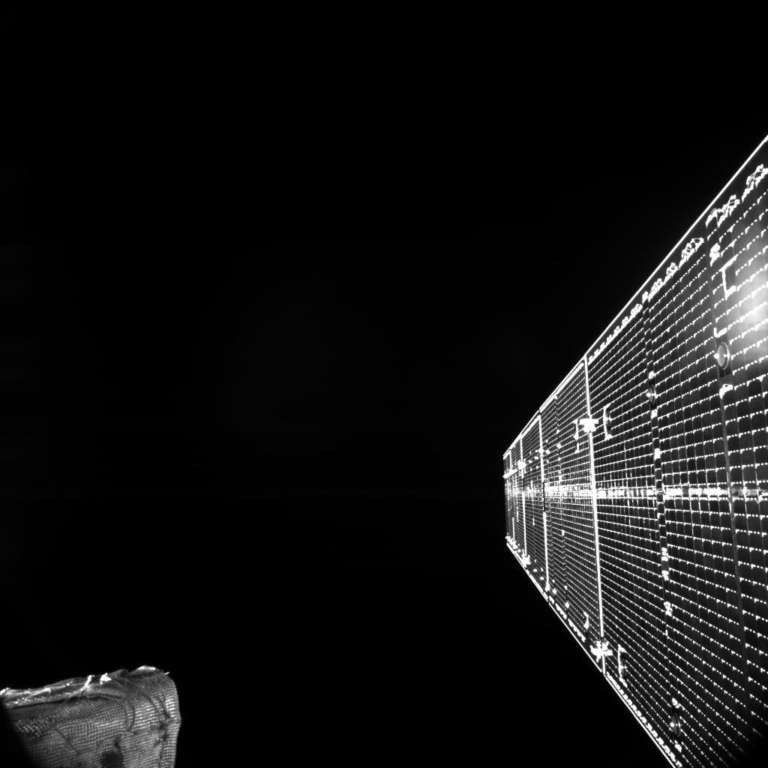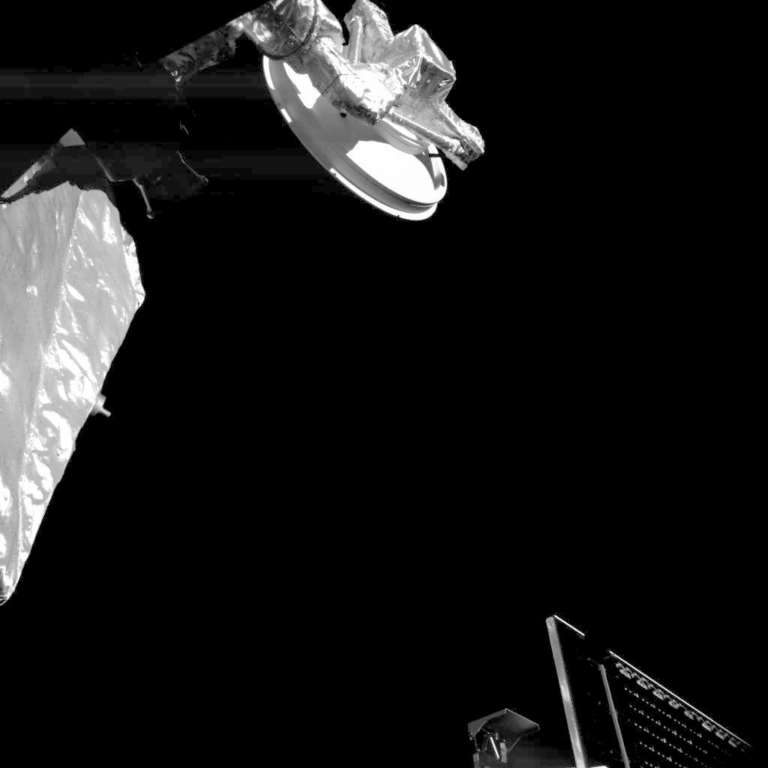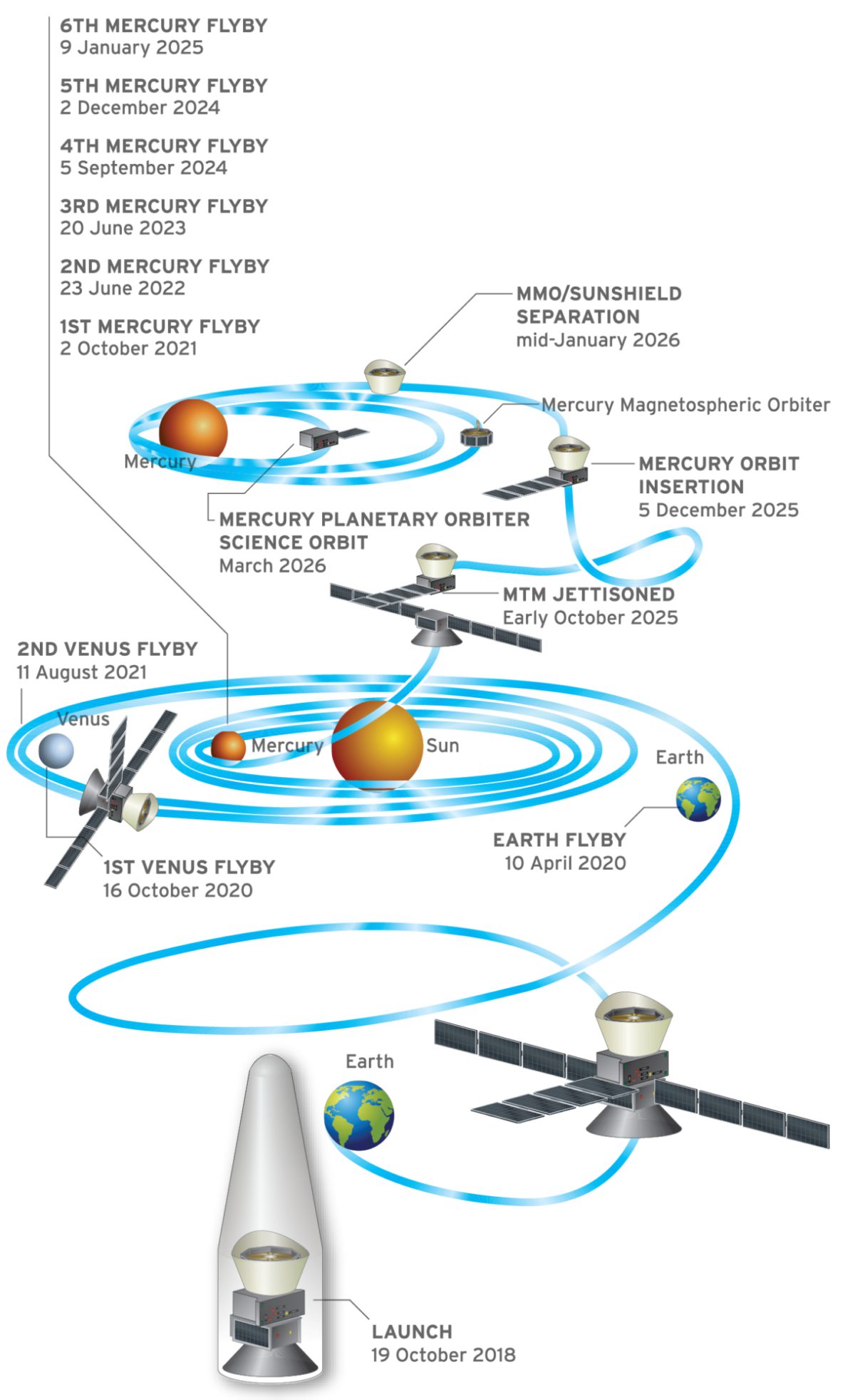Emily Lakdawalla • Oct 22, 2018
Following perfect launch, BepiColombo takes self-portraits from space
BepiColombo's launch was nominal -- the best thing any launch can be. Here's a complete replay of the launch from ESA; launch itself happens at 38 minutes in, on 20 October 2018 at 01:45 UTC. The view is remarkably clear for three-plus minutes following ignition, through the burnout of the side boosters. I was particularly struck by the slow-frame-rate photos of the fairing falling to Earth after separation; you can see the remarkably flexible fairing warping back and forth as it falls, flexible like two leaves of endive.
That video is cool, but I equally enjoyed this infrared home video. It was shot by Jorn Helbert with an infrared camera. Jorn is the principal investigator of the thermal infrared imaging spectrometer on BepiColombo -- MERTIS -- so it is singularly appropriate.
And here is the video of the @BepiColombo launch - in honor of @MERTISonBepi of course taken with a thermal IR camera (bonus - the sound of a happy PI) pic.twitter.com/HMnx1wXGlI
— Jorn (@Planetguy_Bln) October 20, 2018
Jorn sent the following message around to the scientists subscribed to an email list for Mercury science, and it's lovely.
As you all have seen the launch was a complete success! For me it was the first rocket launch I saw live and I was not really prepared for all the emotions. Seeing Ariane 5 launching at night is just spectacular! The Ariane 5 performed flawlessly and the ESA team did a fantastic job in getting us a mission. Interestingly the only minor „issue“ they noticed is that the spacecraft seems a bit colder than expected - which is great news for our time at Mercury. Check out the ESA website for the selfies we got back of the deployed solar arrays and low and high gain antennas. It’s good to see it in telemetry - it’s even better to see it „with your own eyes“
I still can’t really believe that after working on this mission for 15 years we are finally on our way to Mercury. And lets not forget that MERTIS and a couple of other instruments will already get data during the Venus flybys and hopefully also during the Earth-Moon flyby - the latter still has to be officially approved. Now we are all eagerly waiting for the commissioning of the instruments which actually starts this week. For MERTIS the slot is the 13 and 14 of November.
So again - thank you for all the support and looking forward to adding some great Mercury science with BepiColombo!
(If you're interested in the clause "the latter still has to be officially approved," I have a great article about that coming up in the December issue of The Planetary Report. Not to do with BepiColombo's Earth flyby, but with OSIRIS-REx's Earth flyby. Stay tuned for that. If you're reading this blog post after 17 December 2018, follow the link to see the article by Vicky Hamilton.)
Following launch, BepiColombo documented successful solar array and antenna deployments with self-portraits. There is nothing that I do not love about tiny engineering cameras mounted on spacecraft to document deployments. I'll explain why below, but first: three selfies from space taken by the Mercury Transfer Module (MTM), one of three autonomous components of BepiColombo.



How were these photos taken? MTM has 3 monitoring cameras with modest 1024-pixel-square detectors. (Click here to see the location and field of view of all three monitoring cameras.) ESA has stated that they'll be used during planetary flybys. I am super-duper excited about that. You can see that there is spacecraft hardware in the field of view, as is appopriate for cameras intended to monitor hardware deployments. But there is a huge amount of black space in the field of view also. I absolutely cannot wait to see what other things will show up in that black space during all the flybys BepiColombo will perform on its 7-year journey to Mercury.
Let’s Go Beyond The Horizon
Every success in space exploration is the result of the community of space enthusiasts, like you, who believe it is important. You can help usher in the next great era of space exploration with your gift today.
Donate Today

 Explore Worlds
Explore Worlds Find Life
Find Life Defend Earth
Defend Earth


